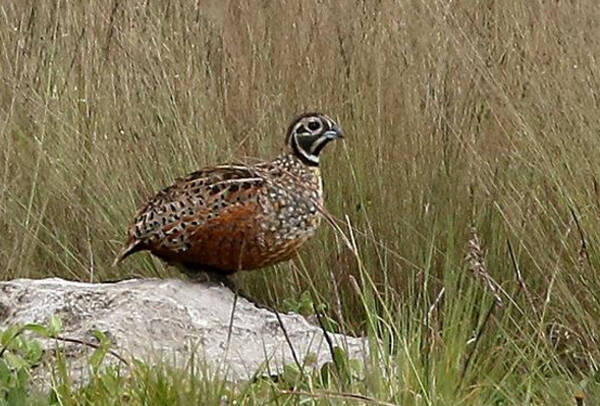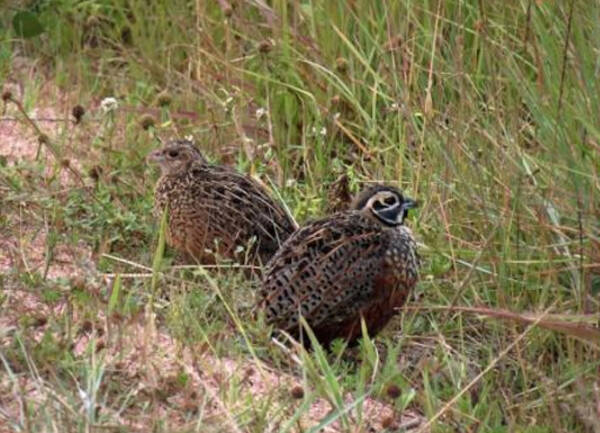Ocellated Quail
IUCN
LCBasic Information
Scientific classification
- name:Ocellated Quail
- Scientific Name:Ocellated Quail,Cyrtonyx ocellatus
- Outline:Landfowl
- Family:Chickeniformes Ornithidae Ornithidae
Vital signs
- length:23 cm or so
- Weight:182-218g
- lifetime:No textual research information is available
Feature
Distribution and Habitat
It is found in Mexico (Oaxaca) and east to Guatemala, El Salvador, and Honduras to Nicaragua.
It inhabits oak or oak pine forests in tropical open savannas, but also in temperate forests, ranging from 750 to 3050 m above sea level.
Appearance
The quail is 23 cm long and weighs 182-218 grams. Has a very distinctive head pattern; Unlike regular painted quail, the spots on the sides of the forechest disappear. Although the spots in both sexes are very complex, there is a strong sexual dimorphism in feather coloration. The male bird is characterized by a distinctive black and white face. The ventral outline feathers are dark gray with white spots. The female bird is smaller and has a different feather color than the male, instead of a black and white face, with a brown pattern of different tones. The whole is also more tan. Both sexes have blue beaks; A short tail; Large claws used to dig underground for food sources.
Details
Ocellated Quail (Cyrtonyx ocellatus), no subspecies.

Quails are herbivorous birds. The food is mainly Oxalisspp. And sedge (Cyperusspp.) The seeds of... As a result, these birds are often seen digging in moist soil, with elongated claws suited to digging at the roots and tubers of plants. Insects and pupae are also another important food source. During the summer months, when prey is more abundant, birds often switch their diet to insect-eating.
The breeding season in Guatemala is between April and August. The egg size is 32.3 × 25.1 mm. The nest is usually covered with grass weave. Both male and female birds participate in the hatching and brooding of eggs for the first few days after hatching. Each litter produces an average of 10 eggs, and reproductive success is thought to be related to summer precipitation. Summer rainfall increases the abundance and growth of food plants and increases the biomass of native perennial clumps, providing a critical safeguard for quail growth.

The main threat to the survival of the quail is the loss of forest area due to deforestation and habitat degradation. Due to the needs of the rapidly growing local population, open pit mining concessions accounted for 25 per cent of the forest land area of the Guatemalan plateau as of 2010. Intensive grazing and large area burning are also a serious and widespread threat, as they severely affect the underground food supply of species. Hunting pressure almost certainly occurs over most ranges, but in southern Mexico, birds are generally no longer kept as pets. Dense populations of mainly small-scale farmers in the Guatemalan highlands cause widespread disturbance of the forest floor, including protected areas, through the mass collection of wood and leaf scraps for organic fertiliser, as well as roaming dogs; As a result, the breeding success rate of eye-spotted quails is low. There appears to be no suitable habitat within the confines of its protected area.
Listed on the International Union for Conservation of Nature (IUCN) 2016 Red List of Threatened Species ver 3.1 - Near Threatened (NT).
Protect wild animals and eliminate wild meat.
Maintaining ecological balance is everyone's responsibility!








